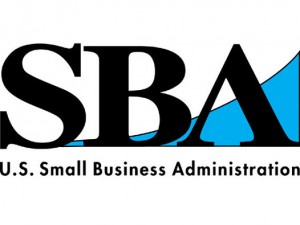Aside from the opportunities that they offer, SBA backed loans are known for their challenging approval process which includes long waits, lots of paper work, and strict requirements. But, recent legislation has made that application process a bit easier for small business borrowers while giving banks more flexibility in the way they structure their loans.
 The new legislation will primarily affect the SBA’s flagship 7(a) and 504 loan programs. The 7(a) loan is typically used to establish a new business or to assist in the acquisition, operation, or expansion of an existing business. In this case a bank provides all of the financing, while the SBA guarantees to pay a portion of the loan should the borrower default. The 504 loans are intended for the purchase of land, including existing buildings, renovations and improvements to the property, the construction of new facilities, and the purchase of long-term machinery and equipment. They typically involve financing split between a bank and a Certified Development Company (CDC).
The new legislation will primarily affect the SBA’s flagship 7(a) and 504 loan programs. The 7(a) loan is typically used to establish a new business or to assist in the acquisition, operation, or expansion of an existing business. In this case a bank provides all of the financing, while the SBA guarantees to pay a portion of the loan should the borrower default. The 504 loans are intended for the purchase of land, including existing buildings, renovations and improvements to the property, the construction of new facilities, and the purchase of long-term machinery and equipment. They typically involve financing split between a bank and a Certified Development Company (CDC).
So what exactly got changed? Here is a brief rundown:
Good bye wealth test. Up until now, the SBA required loan applicants to report their personal wealth and assets, so that lenders could avoid financing those who have plenty of financial resources at their disposal. But since many technically wealthy business owners still have difficulty securing financing, it’s being pushed aside. In short, it means a little less paper work for small business applicants.
The removal of collateral limits. Under the 504 program, lending banks could only use the financed equipment or property as collateral on the loan. Now, business owners can tap into other forms of collateral, such as physical assets or future revenues, to secure a 504 loan. This change could help business borrowers secure better terms and lower interest rates.
More leeway with project expenses. With the 504 program, borrowers could only include project expenses that were incurred no more than nine months before they sent their loan application to the SBA. So, for example, if you purchased permits to build or renovate a new property a year before securing a 504 loan, the money could not be used to cover that expense. Now, if an expense is tied to the project for which a company secured the 504 loan, the funds can be used to cover it, regardless of when it was incurred.
In short, the SBA loan approval process will continue to be lengthy and cumbersome, but these changes will at least lighten the load a bit.
